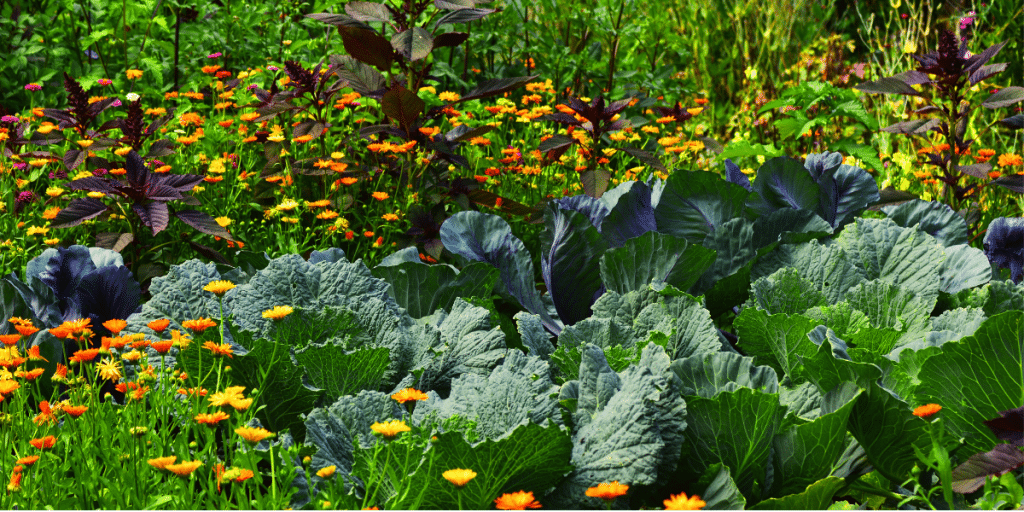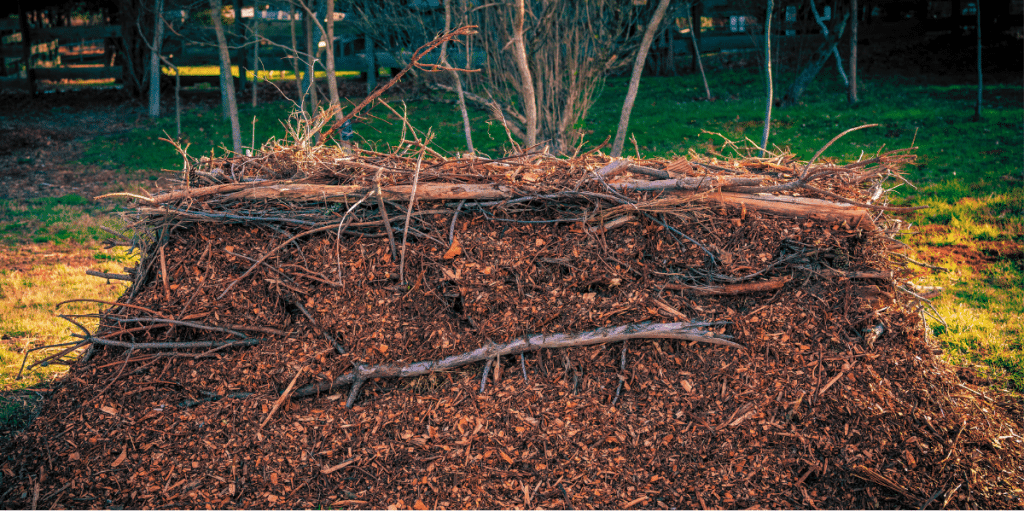The Symbiotic Symphony of Companion Planting

Welcome to the enchanting world of companion planting, where plants become more than just solitary entities in your garden – they become part of an interconnected community, each member supporting and enhancing the other. This is a tale as old as time, rooted in the wisdom of nature, where diverse species coexist and thrive together, offering a masterclass in harmony and balance.
Companion planting is not just a gardening technique; it's a natural strategy that enhances the health and yield of your plants. It involves strategically placing different plants close together for mutual benefits, such as pest control, pollination, habitat for beneficial insects, and improved growth. This age-old practice, embraced by indigenous cultures and traditional farmers, is finding renewed interest in our modern quest for organic and sustainable gardening methods.
In this article, we will delve into the art and science of companion planting. We'll explore how certain plant combinations can deter pests, attract beneficial insects, and even enhance the flavor and growth of their garden neighbors. From the classic pairings of tomatoes and basil to the protective nature of marigolds, we will uncover the secrets of creating a thriving, vibrant, and naturally balanced garden ecosystem.
So, whether you are a seasoned gardener or just starting out, get ready to be inspired by the magic of companion planting. It's time to transform your garden into a symphony of symbiotic relationships, where each plant plays a crucial role in a more productive, sustainable, and beautiful garden.
Problem Statement: The Challenges of Modern Gardening and Monoculture
In the quest for a bountiful harvest, modern gardening and agricultural practices often overlook one of nature's most effective strategies: biodiversity. The widespread adoption of monoculture – growing a single crop in a given area – has led to several challenges. These include increased vulnerability to pests and diseases, soil depletion, and the need for chemical fertilizers and pesticides. Such practices, while efficient on the surface, can harm the environment and the natural balance of ecosystems.
Moreover, the lack of diversity in gardens and farms not only affects plant health but also impacts the local wildlife, including pollinators and beneficial insects, which play a crucial role in the health of our planet. The absence of varied habitats due to monoculture and excessive use of chemicals contributes to a decline in these essential species.
The challenge, then, is to create a gardening approach that promotes diversity, sustainability, and balance. This is where companion planting offers a time-tested solution, harnessing the power of plant diversity to create a more resilient and productive garden.
Embracing Companion Planting for a Balanced Garden
Companion planting emerges as a natural and effective solution to the challenges of modern gardening and monoculture. By cultivating a variety of plants in close proximity, we can harness their natural interactions for mutual benefit, creating a balanced and healthy garden ecosystem.
- Natural Pest Control: Certain plant combinations naturally repel garden pests. For example, marigolds release a substance that deters nematodes, while basil can help keep aphids away from tomatoes. This reduces the need for chemical pesticides, promoting a more organic gardening approach.
- Enhanced Pollination: Companion planting can attract pollinators like bees and butterflies. A diverse garden with a mix of flowering plants ensures that pollinators are more likely to visit, leading to better pollination and, consequently, a more fruitful harvest.
- Improved Soil Health: Different plants have varying nutrient requirements and root systems. Growing them together ensures balanced nutrient uptake and prevents soil depletion. Some plants, like beans and peas, even fix nitrogen in the soil, enriching it for neighboring plants.
- Natural Support and Shelter: Tall plants can provide shade for sun-sensitive shorter plants or act as natural trellises for climbing plants like beans or cucumbers. This intelligent spatial arrangement maximizes space and creates microclimates that cater to the needs of different plants.
- Disease Prevention: Diversity in planting can hinder the spread of plant diseases. If one plant type is affected, the disease is less likely to spread to others, ensuring overall garden health.
- Increased Yield and Flavor: Some companion plants can enhance the growth rate and flavor of their neighbors. Herbs are particularly known for this; for example, planting chives near carrots can improve their taste.
The Multifaceted Advantages of Companion Planting
The adoption of companion planting in your garden extends beyond just solving the immediate problems of pests and plant health. It brings a range of benefits that underscore the elegance and effectiveness of working in tandem with nature:
- Ecosystem Diversity: Companion planting promotes biodiversity, which is crucial for a resilient and healthy garden ecosystem. This diversity attracts a variety of beneficial insects and wildlife, creating a balanced natural environment.
- Chemical-Free Gardening: By relying on the natural relationships between plants for pest control and fertilization, you reduce the need for chemical inputs. This approach not only protects the environment but also ensures healthier, organic produce.
- Improved Plant Health and Growth: Companion plants can provide essential nutrients, shade, and physical support to each other. This mutual support system often results in stronger, more vigorous plant growth and a more abundant yield.
- Water Efficiency: Certain plant combinations can improve soil moisture retention, reducing the need for frequent watering. For example, ground cover plants can help keep the soil cool and moist, benefiting taller, sun-loving plants.
- Natural Beauty and Interest: Companion planting often leads to a more aesthetically pleasing garden with a variety of colors, textures, and heights. This variety can transform your garden into a more enjoyable and engaging space.
- Sustainable Gardening Practice: Embracing companion planting is a step towards sustainable gardening. It aligns with principles of permaculture and organic farming, focusing on creating a self-sustaining environment that works in harmony with nature.
- Knowledge and Skill Building: Learning and implementing companion planting techniques deepens your understanding of plant interactions and gardening. It's a fulfilling experience that enhances your gardening skills and knowledge.
How-To Guide: Getting Started with Companion Planting
Starting with companion planting can be both exciting and a bit daunting. But fear not! Here’s a simple guide to help you begin this rewarding journey:
- Start Small: If you’re new to companion planting, begin with just a couple of plant pairings. This will allow you to observe their interactions and learn as you go.
- Understand Your Plants: Research the plants you want to grow. Understand their needs in terms of sunlight, water, and soil type. This knowledge is crucial for successful companion planting.
- Choose Complementary Pairings: Some classic companion planting pairings include tomatoes with basil or marigolds, carrots with onions, and cucumbers with radishes. These pairings mutually benefit each other by repelling pests, attracting pollinators, or providing nutrients.
- Consider Timing: Planting times can vary for different species. Ensure that your companion plants have compatible growing timelines so that they can truly benefit each other.
- Plan Your Garden Layout: Arrange your plants so that each has enough space and resources to grow. Taller plants should not overshadow smaller, sun-loving plants. Consider the root systems as well, to prevent competition for nutrients.
- Observe and Adapt: Monitor your garden’s progress. Observation will teach you a lot about what works and what doesn’t, allowing you to adapt your approach in future plantings.
- Keep Records: Note down what pairings you used and how they performed. This will be a valuable reference for planning your garden in subsequent seasons.
Exploring Innovative Techniques: Combining Companion Planted Food Forests with Hügelkultur
In the quest to create a sustainable and productive garden, two innovative methods stand out: the Food Forest and the German Hügelkultur. When these approaches are combined, they have the potential to transform an ordinary backyard into a thriving urban food forest garden, capable of producing food for years.
The Companion Planted Food Forest Concept: A food forest mimics a natural forest's ecosystem but primarily consists of edible plants and trees. Layers are a key feature here, including a canopy of tall fruit and nut trees, a lower layer of berry shrubs, and a ground cover of edible plants and herbs. The idea is to create a self-sustaining system where each layer provides for the others, creating a biodiverse, productive environment. The more companion plants you use here the better your food forest.
Hügelkultur for Sustainable Soil Cultivation: Hügelkultur, a traditional German method, involves creating raised garden beds filled with rotting wood and other compostable biomass. As the wood decomposes, it becomes a sponge-like reservoir that retains water and releases nutrients over time. This method not only improves soil fertility but also reduces the need for irrigation and fertilizer.
A Symbiotic Relationship: Combining a companion planted food forest with Hügelkultur beds can create a super productive garden. The Hügelkultur beds offer rich, aerated, and moist soil conditions ideal for the growth of various layers in the food forest. This combination can lead to a more resilient system that not only produces a variety of foods from vegetables to nuts and fruits but also enhances soil health and biodiversity.
Urban Adaptation: In an urban setting, this approach can be scaled down to fit smaller spaces. Even a modest yard can support a mini food forest on Hügelkultur beds, providing a sustainable source of food for the household. This system requires less maintenance over the years, as it develops its balanced ecosystem where plants support each other.
Combining these two methods can create a revolutionary approach to urban gardening – yielding a lush, self-sustaining, and highly productive space. This concept not only supports long-term food production but also contributes to urban ecological health.

Cultivating a Future with Companion Planted Urban Food Forests and Hügelkultur
The fusion of Companion Planted Food Forests and Hügelkultur in urban gardens is more than just an innovative approach to food production; it's a long-term investment in sustainable living and ecological balance. Let's explore the enduring impacts of this combination:
- Enhanced Ecosystem Services: Over time, urban food forests contribute to biodiversity, improve air and soil quality, and create habitats for beneficial wildlife. These ecosystems become urban oases, contributing to the ecological health of the city.
- Sustainable Food Production: The synergy between the layered planting of food forests and the nutrient-rich, water-efficient Hügelkultur beds ensures a continuous supply of a wide variety of foods. This method supports long-term food security and resilience against climate uncertainties.
- Reduced Carbon Footprint: Both techniques promote carbon sequestration – trees and plants in the food forest capture carbon dioxide, while the decomposing organic matter in Hügelkultur beds locks carbon into the soil. This dual effect contributes to mitigating climate change.
- Water Conservation: Hügelkultur’s natural water-retention properties significantly reduce the need for irrigation. In times of water scarcity, this can be a crucial factor in maintaining a productive garden.
- Soil Health and Fertility: Over years, the decomposing layers in Hügelkultur beds continually enrich the soil, improving its structure and fertility. This leads to healthier plant growth and reduced reliance on external fertilizers.
- Community Engagement and Education: Urban companion planted food forests on Hügelkultur beds can become community hubs, fostering social connections, and serving as educational grounds for sustainable practices. We could plant food forests on Hügelkultur beds all over our cities, wherever there is a tree that doesn't do anything except produce shade, we can plant a tree that produces food for people and/ or wildlife as well as a variety of companion plants that also produce food for both people and wildlife. Think Parks full of self sustaining food systems instead of just relaxing shade trees.
- Personal Wellbeing and Connection to Nature: Working in a food forest garden can be deeply satisfying and therapeutic. It offers urban dwellers a chance to reconnect with nature, understand the rhythms of natural ecosystems, and contribute to a sustainable future.
Integrating Companion Planted Food Forests with Hügelkultur in urban settings isn't just a gardening technique; it's a profound shift towards an ecologically sound and sustainable way of living. This approach promises a future where cities can be lush, green, and abundant with life – a true harmony between urban living and nature. Plus it puts all the organic waste to use instead of putting it in landfills.
Ready to transform your urban space into a thriving food forest garden? The journey towards a sustainable future begins in your backyard!
The Lasting Benefits of Companion Planting
As we embrace companion planting, its long-term impacts extend far beyond just a single growing season, fostering a sustainable and productive garden ecosystem for years to come.
- Sustainable Ecosystem Development: Over time, companion planting leads to the development of a balanced and self-sustaining ecosystem. This natural balance reduces the need for chemical interventions, fostering a healthier environment for plants, wildlife, and humans.
- Soil Health and Biodiversity: Continuous companion planting enhances soil health and biodiversity. Different plant species contribute various nutrients, improve soil structure, and support a diverse range of beneficial organisms.
- Pest and Disease Resistance: As companion planting promotes a variety of plant species, it naturally reduces the risks of pests and diseases that can decimate monoculture systems. This biodiversity creates a more resilient garden that can withstand and recover from infestations more effectively.
- Increased Productivity and Yield: Over the years, companion planting can lead to increased garden productivity. The synergistic effects of certain plant combinations often result in higher yields and better-quality produce.
- Environmental Conservation: By reducing the need for chemical fertilizers and pesticides, companion planting plays a significant role in conserving the environment. It helps maintain clean water sources and reduces pollution.
- Community and Educational Value: Companion planting can be a powerful tool for community building and education. It provides a hands-on way to learn about ecology, plant biology, and sustainable practices.

Conclusion: Embracing a Holistic Approach with Food Forests and Hügelkultur
Companion planting, when combined with the concepts of Food Forests and Hügelkultur, creates a holistic approach to gardening and agriculture. The Food Forest model takes companion planting to a new level, incorporating a diverse array of plants in a mutually beneficial arrangement, mimicking natural ecosystems. Hügelkultur complements this by providing a rich, self-sustaining soil base rich in nutrients and moisture, ideal for supporting a vibrant food forest.
Together, these methods form a powerful approach to urban and suburban gardening, promoting great harvests of a variety of plants. They showcase how we can work with nature to create abundant, sustainable, and resilient food systems. As we integrate these practices, we step closer to a future where our gardens and landscapes are not only productive but also harmonious with the natural world.
Embracing companion planting, along with the techniques of Food Forests and Hügelkultur, is not just about growing plants; it's about cultivating a sustainable future, one garden at a time.
